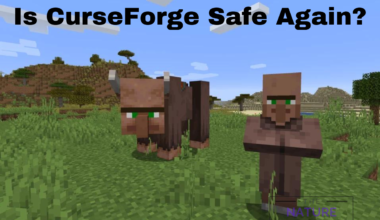Many of us are fans of ChatGPT’s apt text responses, but it cannot process images, which is quite limited.
It is where Stable Diffusion AI model takes the lead.
Therefore they are two different AI models or products with huge daily applications.
Continue reading to learn about the differences and similarities between ChatGPT and Stable Diffusion and how both models work.
Table of Contents Show
ChatGPT Vs. Stable Diffusion: Similarities And Differences
With so many AI technologies clogging the market lately, users often confuse one with the other.
ChatGPT is a popular AI technology that responds to text prompts but fails to provide a text-to-image output.
On the other hand, Stable Diffusion is an AI technology specializing in visual responses.
Like ChatGPT, Stable Diffusion is a deep learning platform released in 2022 that utilizes parameters and neural networks but offers a result in a different medium.
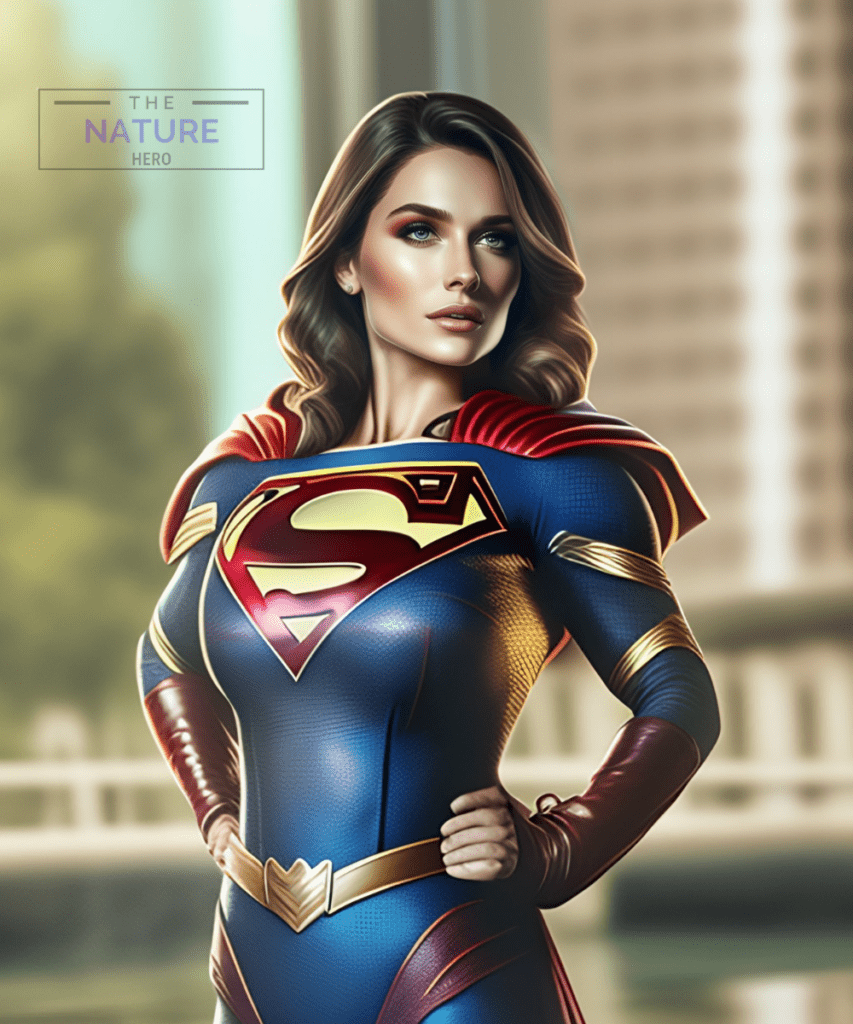
Therefore, these two popular AI technologies share many similarities and dissimilarities.
How Does The ChatGPT Model Work?
ChatGPT is a language model developed by OpenAI that uses a deep learning algorithm called GPT (Generative pre-trained transformer) to generate human-like responses to natural language queries.
Although it sounds simple, it involves quite a complex process of training with data.
1. Training
The AI is trained on a massive corpus of text data, including books, articles, and websites, using unsupervised learning.
It generates responses based on the user’s query without being explicitly taught the correct output.
2. Fine-Tuning
Fine-tuning is done with the pre-trained model on a smaller dataset of conversational data, such as Chat logs or customer service interactions.
It helps the AI to learn to generate natural and contextually appropriate responses.
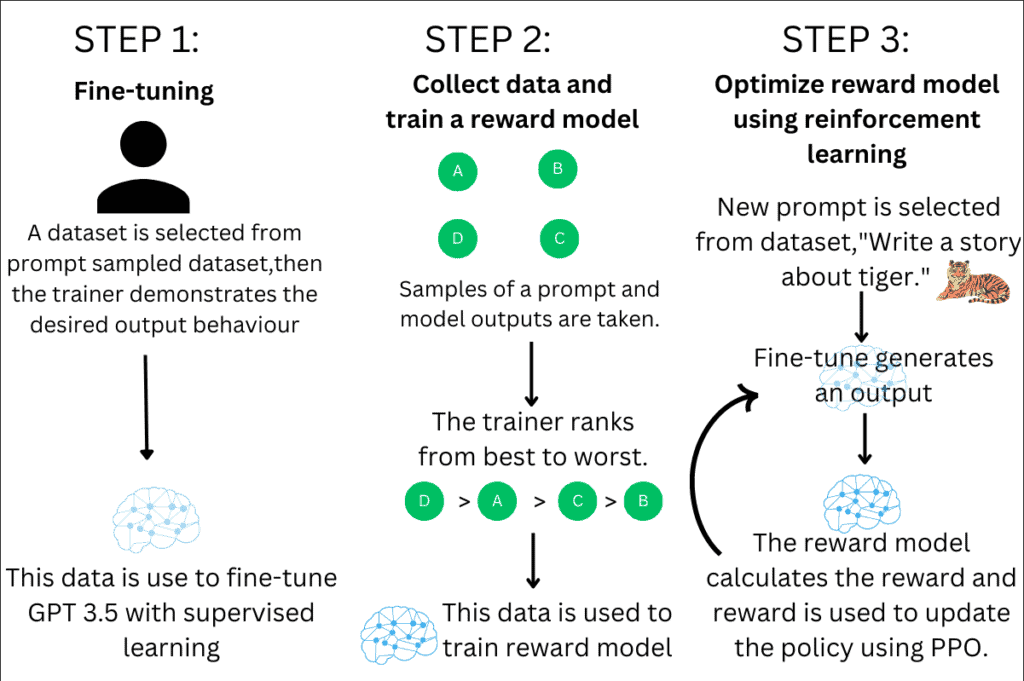
3. Input Processing
ChatGPT uses tokenization to break down the text into individual words when a user enters a query.
For example, Describe photosynthesis process = Describe [Token 1] Photosynthesis [Token 2] Process [Token 3].
4. Response Generation
ChatGPT generates a response by predicting the most likely next word in the sequence based on its training data that is contextually relevant to the input prompt and sounds human-like.
Watch the video to learn how the ChatGPT model works,
How Does The Stable Diffusion AI Model Work?
Stable Diffusion is deep learning, a text-to-image model that takes inputs from text and generates detailed images.
Moreover, it is open software that can be downloaded and edited per your preference.
You can install the model on your computer and run it yourself or access third-party sites powered by Stable Diffusion, such as Nightcafe, Dream Studio, Lexica, etc.
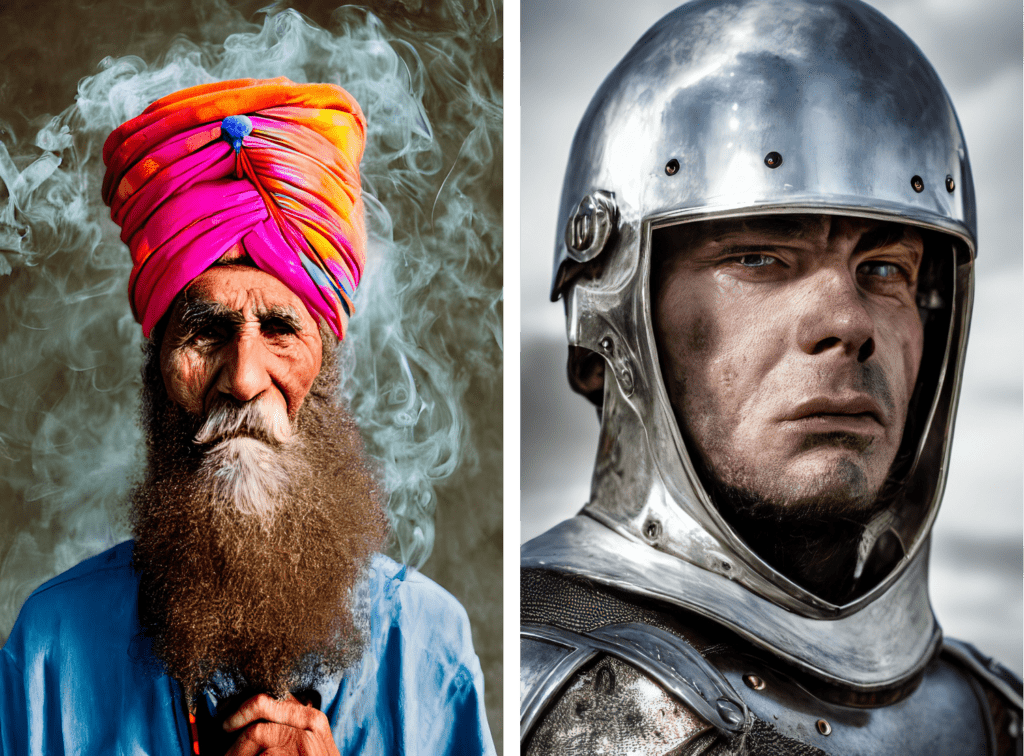
Stable Diffusion can be used to inpaint and outpaint. Look at the differences between inpainting and outpainting below;
| Inpainting | Outpainting |
|---|---|
| The process of filling in missing or damaged pixels in an image using surrounding pixels as a reference. | The process of generating new image content beyond the original boundaries of an image |
Stable Diffusion relies on forward Diffusion and reverse Diffusion processes that follow add noise to the image and remove it to create a final image.
Here is how Stable Diffusion works;
1. Architecture
It uses a latent Diffusion model trained to denoise images using VAE and U-Net.
VAE or Variational autoencoder compresses images to grab a fundamental semantic meaning of the image, while U-Net de-noises the output to obtain a latent representation.
2. Training Data
It is trained on 5 billion image-text pairs taken from LAION-5B, a publicly available dataset, including Pinterest, WordPress, Wikimedia, etc.
3. Training Procedure
It is trained on the LAION2B-en, Laion-high resolution subsets, and LAION-Aesthetics v2.5+ that detects watermarks with greater probability to create unique images.
4. Fine-Tuning
It uses embedding to generate visually similar images to the text input.
A hyper network allows it to imitate the art style of specific artists, and DreamBooth (deep learning model) allows generating personalized outputs that depict a particular subject.
Watch the video to learn how the Stable Diffusion model works,
ChatGPT Vs. Stable Diffusion: Similarities
ChatGPT and Stable Diffusion AI have more similarities than differences because they are created for the same purpose; to generate responses to user’s inputs.
Therefore, they utilize similar learning, analyzing, and fine-tuning approach to creating a working AI model.
Here are some telltale similarities between ChatGPT and Stable Diffusion.
1. Similar Training Model
ChatGPT and Stable Diffusion AI models are based on deep learning techniques to create apt responses to user queries.
The ChatGPT AI models and text-image-generating AI models use deep neural networks.
For instance, convolutional neural networks (CNNs) and recurrent neural networks (RNNs) learn patterns in input data and generate output.
| CNNs | RNNs |
|---|---|
| A type of deep neural network that is particularly well-suited for image recognition and processing tasks. | A type of neural network that is commonly used in natural language processing and other sequential data analysis tasks |
| They automatically learn and extract meaningful features from input images through a process of convolution and pooling. | They process variable-length sequences of input data by applying the same set of weights to each element of the sequence |
2. Generate Unique Content
ChatGPT and text-image-generating AI models can generate unique content based on input data.
The Chatbot model generates new text responses based on input text, while text-to-image AI models like Stable Diffusion generate new images based on input text descriptions.
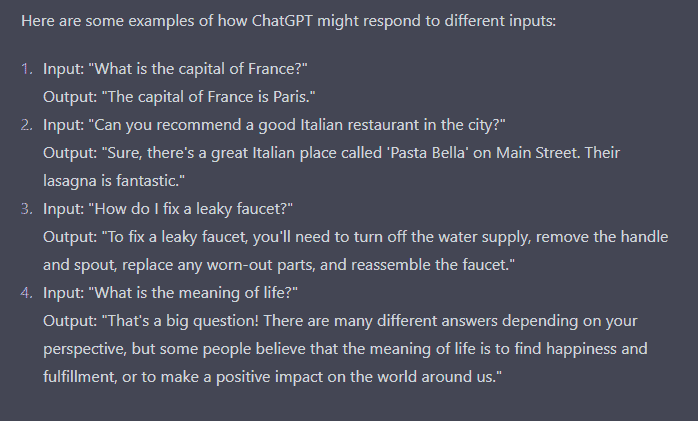
3. Extensive Amount of Training Data
Both models required large amounts of training data to create the usable platform that they are today.
ChatGPT’s deep learning model is filled with over 150 billion parameters and trained with around 570GB of datasets.
Similarly, the text-image generating AI model uses the size of the 160 million-image training dataset and parameters.
4. Fine Tuning of Data
Fine-tuning is crucial to map user input to the correct responses, without which both AI models will fail.
ChatGPT and text-image-generating AI models are fine-tuned for specific result-driven tasks.
For example, the ChatGPT AI model is fine-tuned to generate responses specific to a particular subject or topic.
In contrast, Stable Diffusion is fine-tuned to create images detailed to a specific style or theme.
5. Practical Applications
Both AI models have a more comprehensive range of practical applications for daily use.
They provide many practical applications, including content generation, creative industries, customer service, and e-commerce.
For example, ChatGPT provides Chatbot and virtual assistance to generate essays, articles, social media posts, emails, etc.
On the other hand, Stable Diffusion generates images for illustration, website product images, social media posts, and digital art and graffiti.
ChatGPT Vs. Stable Diffusion: Differences
Despite many similarities, ChatGPT and Stable Diffusion differ in many aspects.
Here is a table highlighting some of the telltale differences between the two.
| Parameters | ChatGPT | Stable Diffusion |
|---|---|---|
| Type | A chatbot AI application is created by OpenAI. | An open-source text-to-image application is created by Stability AI. |
| Architecture | A method for creating text-based responses from input prompt using tokenization, embedding, processing, and decoding. | A method for creating images from text or image prompts by adding random noise and removing noise to construct the desired image. |
| Model | It is based on Generative Pre-trained Transformer (GPT), a neural network machine learning model. | It is based on large-scale AI open network, including LAION-5B, LAION2B-en, Laion-high resolution subsets, and LAION-Aesthetics v2.5+. |
| Training Data | It is trained on large datasets of text, such as books, articles, or social media posts. | It is trained on datasets (image/text) such as image captioning datasets or generative adversarial networks (GANs). |
| Application | It is often used for conversational agents, language translation, or content creation such as essay, articles, blogs, social media posts, etc. | It is solely used for image generation, object recognition, and image captioning. |
| Metrics | It is typically evaluated based on metrics such as perplexity, accuracy, or F1 score (measuring a model's accuracy). | It is evaluated based on metrics such as image quality, diversity, and realism. |
| Resources | It requires significant computational resources, such as GPUs and high-performance computing clusters, to train large models on massive amounts of text data. | It requires less compute power for training and inference, although this may vary depending on the complexity of the model and size of the dataset. |
| Power | It requires at least 16GB of RAM, modern GPU, and at least four cores. | It uses at least 4GB of VRAM to operate effortlessly. |
Final Thoughts
Despite many differences, ChatGPT and Stable Diffusion are beneficial applications with many daily benefits.
The best thing about them is that they are free and accessible, including providing multi-platform access.
In fact, they will be used more often in the future because, with continuous improvements, they are sure to get more popular.
Frequently Asked Questions
What Are Some Unique Applications of Stable Diffusion?
You can use the Stable Diffusion AI model for a variety of applications.
For example, it can generate realistic images of scenes described in the text, identify objects in images, and generate captions representing them.
How Accurately Does Stable Diffusion Generate The Images?
While Stable Diffusion generates high-quality images, there may be cases where the images are unrealistic or biased or do not match the input text as intended.
It may struggle to generate images that require creative interpretation or human intuition.
How Can ChatGPT And Stable Diffusion be Used in Business And Industry?
ChatGPT can automate customer service interactions and generate content for marketing and advertising purposes.
On the other hand, Stable Diffusion can help artists, journalists, and businesses with free image creation.


